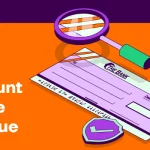Cheque Truncation: Meaning, Benefits and How it Works

Cheque truncation is a mode of clearing cheques electronically. It involves settlement and clearing of cheques between banks without the physical exchange of any paperwork or the instrument itself. The purpose of a cheque truncation system was to quicken the pace at which cheques are cleared. This system has significantly influenced the time taken in processing a cheque-based transaction, with completion within a few minutes.
Cheque truncation, already in use in a majority of nations throughout the world, was introduced in India in 2006. This article will tell you everything you need to know about cheque truncation in detail. Read on to know more about this essential system of clearing cheques quickly.
What is Cheque Truncation?
As per the Reserve Bank of India (RBI), truncation is the process of interrupting the flow of a physical cheque. A drawer issues the cheque en route to the paying bank branch at some point. So instead, the clearing house sends an electronic image of the cheque to the paying branch.
Cheque Truncation System (CTS) is a method of clearing cheques electronically. Instead of physically processing the cheque as it travels to the paying bank branch. RBI has taken this move to expedite cheque clearance.
Major services such as RTGS and NEFT are available to enable inter-bank and customer payments online and in near-real-time. Still, cheques remain the country’s most popular payment mode. This is why the RBI has aimed to improve the cheque clearing cycle’s efficiency.
This mechanism was implemented to expedite the clearance of cheques. It stops the flow of actual cheques from a drawer to the drawee branch. This reduces the associated costs of moving physical cheques. It further minimizes the time required for collecting. It even adds beauty to the cheque processing procedure.
How Does Cheque Truncation Work?
As mentioned above, CTS not only speeds up the transactions involving cheques, but also helps the bank to keep a timely record of all such transactions. Due to the lack of physical paperwork in this system, banks are able to streamline their records in a better way, without worrying about misplacing documents.
Let us look at the process that takes place while clearing a cheque using the cheque truncation system:
- In the first step, the accepting bank captures the image of an electronic cheque. This is done with the help of a ‘Capture System.’
- The captured image is then sent to the clearing house by the accepting bank.
- The clearing house would be incharge of sending the encrypted image to the paying bank.
- The clearing house acts as a gateway between the two banks (paying bank and accepting bank). It transmits the data related to the electronic cheque-based transaction between the two banks.
- The clearing house would now perform the ‘Presentation Clearing’ process. This process is also known as data reading which is done to confirm the authenticity of the cheque.
- After the presentation clearing, the data is sent to the paying bank.
- The paying bank receives the data and images, and verifies everything before processing the cheque forward.
Benefits of Cheque Truncation
- Saving time, money and resources spent on the cheques’ physical transfer from banks to clearing houses.
- No chance of cheque loss due to mishandling by banks.
- Clearing-related fraud becomes less likely.
- CTS is safe and secured.
- The CTS has eliminated geographical jurisdictional limits.
- It expedites the clearance of cheques.
- There are no extra charges for collecting cheques written on a bank inside the grid.
CTS cheque was created to address the shortcomings of the previous cheque clearing system. It took several days to clear. Cheques deposited at the collection bank were moved physically to the drawee bank to credit the money to the drawer’s account. This time-consuming process resulted in cheque-clearing delays.
To overcome this delay, the check truncation system was implemented. The electronic image of the cheque is delivered to the payee bank, which then submits it to the RBI for ultimate settlement. The entire cheque clearance process is finished on the same day or the next working day.
How CTS Benefits the Economy?
Every bank in India uses the CTS system. The goal is to gradually move away from the paper-based system. The CTS system has been effective in resolving logistical challenges. Because data transmission is digital, it reduces operational risk. The CTS system is available at multiple clearing locations regardless of the bank. It is a countrywide network. The procedure brings uniformity and standardization to the system that handles transactions. For verification, it employs MICR and watermarks.
Also Read
Final Word
The RBI implemented the Cheque Truncation System (CTS) to expedite clearing cheques. Cheque truncation ensures efficiency, security, transparency, and faster credit of funds for both the consumer and the bank. The CTS system is an excellent complement to the Digital India plan. Wait times for cheque processing have been reduced thanks to the technology.
FAQs on Cheque Truncation
Ans: The grid-based strategy is the new approach envisioned as part of the countrywide rollout. The entire cheque traffic in the country was previously cleared through 66 MICR Cheque Processing sites. With this technique, they are consolidated into three grids – New Delhi, Chennai, and Mumbai. Each grid provides clearing and processing services to all banks within its jurisdiction. Therefore, banks, branches, and clients in tiny/rural places under the grid jurisdiction would benefit. Regardless of whether there is a formal system for cheque clearing or not.
Ans: The CTS system reduces transaction turnaround times. The physical movement of instruments takes a significant amount of time. The paper-based system was also susceptible to mistakes. The CTS system was able to save operational time and increase efficiency. It eliminates the time spent in transit. The method also reduced the possibility of fraud during transactions.
Ans: By using Public Key Infrastructure. It is used for securing the
integrity,
non-repudiation, and
validity
-of data and images from the presenting bank to the paying bank via the Clearing House. CTS complies with the criteria of the IT Act of 2000. The presenting bank is now required to sign the photos and data from the point of origin. PKI is used throughout the cycle, including the capturing system, presenting bank, clearing house, and paying bank.
Ans: Cheque imaging can be done using a variety of technology choices. Cheque images might be in black and white, grayscale, or colour. These each have their own set of benefits and drawbacks. Black and white photos are small in image size, but they do not reflect all of the fine details of the cheques. Coloured photos are excellent but require more storage and network capacity. Grayscale photos are in the middle. In India, CTS uses a combination of grayscale and black-and-white imagery. Each cheque must be photographed in three different ways: front Gray Scale, front Black & White, and back Black & White.
Ans: Speed clearing speeds up the cheque collection process compared to outstation cheque collection. But it still requires the presence of the paying bank branch at the clearing house location. Grid-based CTS, on the other hand, is a superior system. Moreover, as it covers a greater geographical region, the chances of a paying bank not having a presence in the grid location are rare.
Inside the grid jurisdiction, all cheques that are drawn on branches of a bank are considered and cleared as local cheques under the grid-based Cheque Truncation System clearing. Therefore, cheque collection charges, considering Speed Clearing Charges, shall not be applied if the collecting and paying banks are present within the same CTS grid, even if they are in separate cities.
Disclaimer
This article is solely for educational purposes. Navi doesn't take any responsibility for the information or claims made in the blog.

Customer’s Feedback
No comments found.10 Best Bank for Savings Account in India [Highest Interest Rate 2023]
Savings account is a type of financial instrument offered by several banks. It lets you safely depo... Read More »What is Issuer Identification Number (IIN)- Working and Importance
What is an Issuer Identification Number (IIN)? Banks and financial institutions assign a distinc... Read More »What is a Vostro Account – Meaning, Working and Difference
What is a Vostro Account? A Vostro account is a bank account held by a domestic bank on behalf o... Read More »What is a Solvency Certificate? – Format, Documents Required & How to Apply Online?
What is a Solvency Certificate? A solvency certificate is a legal document furnishing the detail... Read More »What is Merchant Banking – Services, Features, Functions and Example
What is Merchant Banking? Merchant banking is a set of select banking and financial services off... Read More »Automated Clearing House: Objectives, Types and Process
Automated Clearing House is an electronic fund transfer network that manages automatic and direct... Read More »How to Redeem Credit Card Reward Points ?
Credit Card Reward points are types of incentives that customers receive when they use a credit car... Read More »What is Electronic Clearing Service (ECS) in Banking and How does it Work?
What is Electronic Clearing Service (ECS)? Electronic Clearing Service (ECS) is a method of elec... Read More »What are Credit Card Validators and How to Use them?
What is a Credit Card Validator? A credit card validator is a tool that checks the validity of a... Read More »What is Cash Management and How Does it Work?
Managing available capital can make sure that a small business stays afloat. Cash management is an ... Read More »What are Prepaid Expenses? – Definition, Examples, and Journal Entry
Prepaid expenses represent payments made in advance for products or services expected to be incurre... Read More »Increase Credit Card Limit – Important Tips and How to Do It?
The credit card limit is the maximum amount of money you can spend using your credit card. Your cre... Read More »Top 10 Chit Fund Schemes in India in 2023
Chit funds are one of the most popular return-generating saving schemes in India. It is a financial... Read More »10 Best Gold ETFs in India to Invest in April 2023
Gold ETFs or Gold Exchange Traded Funds are passively managed funds that track the price of physica... Read More »10 Best Demat Accounts in India for Beginners in 2023
Creation of Demat accounts revolutionised the way trades were conducted at the stock exchanges. It... Read More »20 Best Index Funds to Invest in India in April 2023
What is an Index Fund? An index fund is a type of mutual fund or exchange-traded fund (ETF) that... Read More »Best Arbitrage Mutual Funds to Invest in India in April 2023
Arbitrage funds are hybrid mutual fund schemes that aim to make low-risk profits by buying and sell... Read More »10 Best SIP Plans in India to Invest in April 2023
What is SIP? SIP or Systematic Investment Plan is a method of investing a fixed amount in ... Read More »10 Best Corporate Bond Funds in India to Invest in April 2023
Corporate bond funds are debt funds that invest at least 80% of the investment corpus in companies ... Read More »10 Best Bank for Savings Account in India [Highest Interest Rate 2023]
Savings account is a type of financial instrument offered by several banks. It lets you safely depo... Read More »































